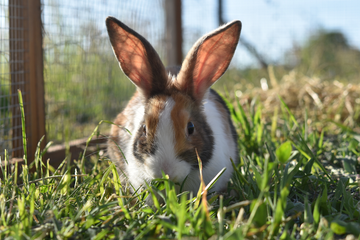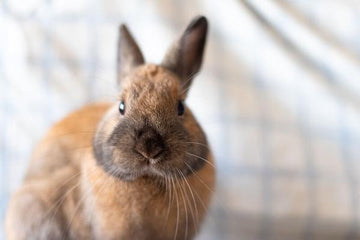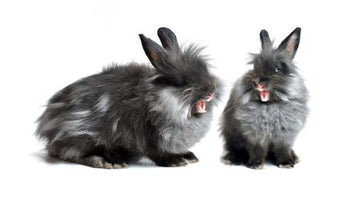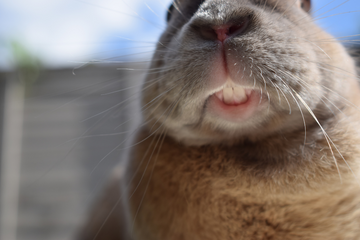Preventing Rabbit Chewing: Effective Tips
Do you come around the corner and see your rabbit digging into the carpet? Are there holes in the rug from their tiny, determined paws? If you’ve tried everything to stop them, but nothing seems to work, you’re not alone.
Click Here to Shop Rabbit Products.

Rabbits chew and dig—it’s part of who they are. But that doesn’t mean you have to live with shredded carpets and gnawed furniture. You can redirect their chewing habits and protect your home with the right approach. This guide will cover why rabbits chew, the best ways to stop destructive chewing, and tips for preventing rabbit chewing in the future.
Why Do Rabbits Chew?
Before tackling the problem, it helps to understand why rabbits chew in the first place. It’s not just a bad habit—it’s a necessity.
Dental Health: A rabbit’s teeth grow continuously. Chewing helps wear them down and prevents painful dental issues.
Exploration: Rabbits experience the world through their mouths. Chewing is how they investigate their surroundings.
Territorial Marking: Rabbits have scent glands in their jaws. Chewing helps them mark what’s “theirs.”
Boredom: A rabbit left without enough stimulation will turn to chewing as entertainment.
Preventing Rabbit Chewing with Positive Reinforcement
Rabbits respond best to rewards rather than punishment. Unlike dogs, they don’t understand discipline the same way. Yelling or scolding will only make them fearful, not stop the behavior.
Instead, reward your rabbit for chewing on appropriate items. If they chew on a designated toy or dig in an approved spot, offer a small treat or extra petting. Over time, they’ll learn what’s okay and what’s off-limits.

Looking for more ways to work with your rabbit’s natural instincts? Check out this article by My House Rabbit for additional insights.
Rabbit-Proofing Your Home
While training your rabbit, it’s also important to set up your home in a way that makes chewing less tempting.
Protecting Your Carpet
Use plastic carpet runners or mats in areas where your rabbit loves to dig.
Try giving them an approved digging spot, like a cardboard dig box. Watch this tutorial to make your own.
Provide more exercise time outside or in a safe, enclosed space with dirt to dig.
Keeping Cords and Cables Safe
Hide cords behind furniture or use cable organizers.
Cover exposed wires with plastic tubing or PVC piping.
-
Limit access to electronics when your rabbit is out for playtime.

Preventing Damage to Furniture and Baseboards
Apply a safe, bitter apple spray to furniture legs and baseboards.
Use plastic corner guards to protect baseboards from nibbling.
Make sure your rabbit has access to safe chew toys instead.
Managing Paper and Cardboard Chewing
Store books and important documents in closed cabinets.
Give your rabbit cardboard toys, but monitor how much they’re consuming.
-
Ensure they’re eating enough hay—chewing cardboard can be a sign they need more fiber.

Providing Alternatives to Chewing
Since chewing is a natural instinct, the key isn’t stopping it—it’s redirecting it. Here are some great alternatives:
Safe chew toys made of untreated wood, willow, or seagrass.
Apple sticks—rabbits love gnawing on these, and they’re completely safe.
Untreated wicker baskets they can chew and dig in.
Hay cubes that satisfy both chewing and dietary needs.
Keeping Your Rabbit Mentally Stimulated
Many rabbits chew out of boredom. Keep them engaged with:
Puzzle toys that make them work for treats.
New tunnels, cardboard forts, or hiding spots to explore.
Regular playtime and exercise to burn off energy.
Consistency is Key
Preventing rabbit chewing takes time and patience. Stay consistent with training, provide appropriate chew options, and rabbit-proof your home as needed. With the right approach, you can save your carpets and furniture while keeping your rabbit happy and healthy.

Rabbit Is It Low Maintenance or More Work Than You Think?

Signs of Rabbit Health: What You Should Know

Decoding Bunny Behavior: Understanding Rabbit Mood






